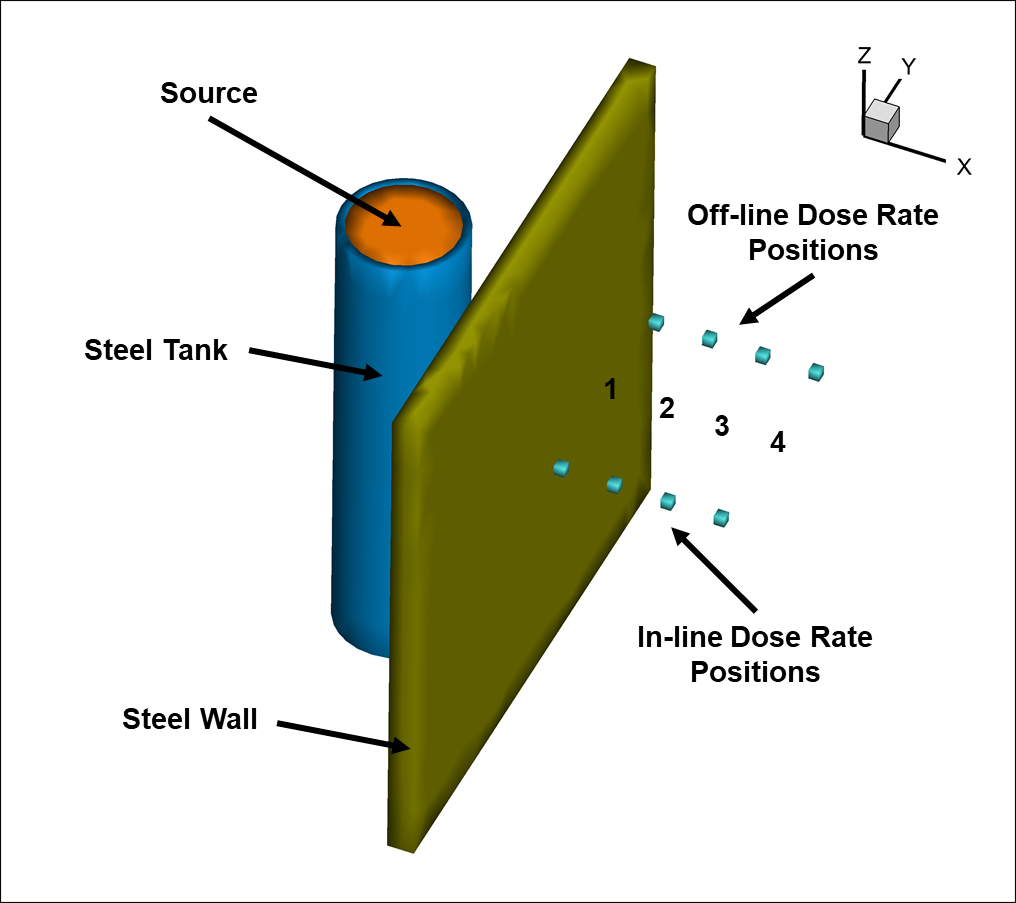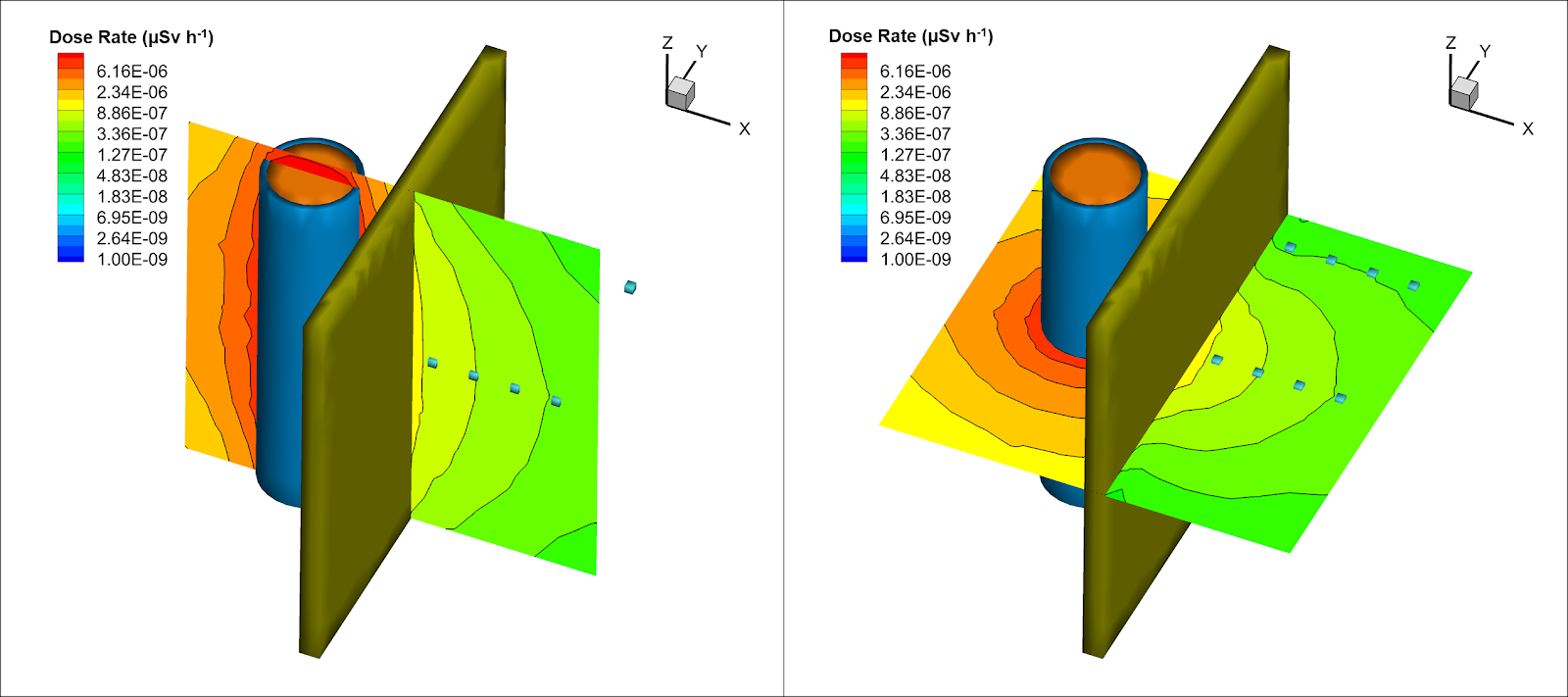Shielding calculations were performed with both the deterministic Attila solver and MCNP® using Attila4MC (referred to herein as Attila4MC) FW-CADIS variance reduction simulating a 16N gamma source uniformly distributed in a water medium surrounded by a steel tank. A 5 cm thick steel wall is located between the source and locations where the dose was calculated. Volume and point detector results were generated using Attila and Attila4MC. Results from a legacy CSG (constructed surface geometry) MCNP calculation were also included in the point detector comparison to validate the unstructured mesh results, generously provided by Richard Haley of TÜV SÜD (https://www.tuvsud.com/en-gb).
Figure 1 illustrates the model geometry with volume detectors. The gamma source is a 90 cm high, 20 cm diameter cylindrical water volume contained inside a 2 cm thick annular steel shell. The hot side of a 5 cm thick steel wall is located 20 cm in the x-direction from the center of the cylindrical tank. The center of the volume detectors (2 x 2 x 2 cm) are located at distances of 30 (position 1), 40 (position 2), 50 (position 3), and 60 (position 4) cm in the x-direction from the cylindrical tank center, and at a height (z-direction) of 50 cm, corresponding to the axial midpoint of the tank. The point detectors are identically located in these locations. Two arrays of measurement points are applied per volume and point detector set. The array referred to as In-line Dose Rate Positions are located at y = 50, the same y-axis location as the tank center. The array referred to as Off-line Dose Rate Positions are located at y = 90, offset 40 cm from the tank center. The surrounding medium (including the volume detectors) is void.

Figure 1. Model geometry with volume detectors included.
The source is a uniformly distributed volume source from 16N gamma emission, with chi values of 2.553 and 0.185 for energies of 6.129 MeV and 7.115 MeV, respectively.
The computational mesh contains 27,516 elements. Calculations use the Transpire46g cross section set (46 gamma groups) in which all fine gamma groups above 8 MeV (the highest source energy group) are unassigned and groups below 6 MeV (the lowest source energy group) are collapsed by two. For the deterministic Attila solver calculations, an SN order of 22 and a Pn order of 3 are used. For the deterministic portion of the Attila4MC FW-CADIS calculation, the an SN order of 16 and a Pn order of 0 are used.
A flux-to-dose conversion factor is used for Attila, Attila4MC, and MCNP-CSG to obtain dose rates in units of µSv h-1 normalized to a total source strength of 1 particle s-1. Attila results are calculated at points using the last-collided method, which semi-analytically transports the last scattered flux to the associated edit points. Table 1 shows which calculations provide results for the various detector types and position arrays.

Table 1. Calculation File Index
Contour plots of the dose rate (µSv h-1) are provided in Figure 2.

Figure 2. Contour plots of the dose rate (µSv h-1) in the Y- and Z-planes (left and right, respectively).
Tables 2 and 3 show dose rate results for point detectors using Attila, Attila4MC, and MCNP-CSG. All calculations were run to convergence with a relative error of less than 5% (5.00E+07 histories). Ratios of Attila to Attila4MC (Attila/Attila4MC) results and MCNP-CSG to Attila4MC (MCNP/Attila4MC) results are included.

Table 2. Point Detector Dose Rate Results (µSv h-1, normalized) for the In-line Position Array

Table 3. Point Detector Dose Rate Results (µSv h-1, normalized) for the Off-line Position Array
Table 4 shows the volume detector results for both arrays for Attila and Attila4MC.

Table 4. Volume Detector Dose Rate Results (µSv h-1, normalized) for the Off-line Position Array